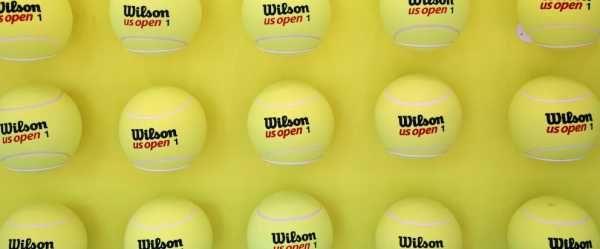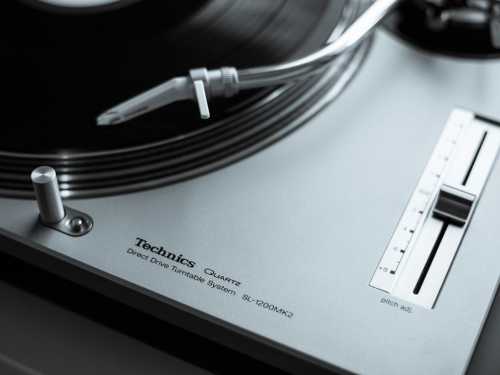
NEW YORK — Tennis has a fuzzy yellow problem most players don’t think about when they open can after can of fresh balls, or when umpires at U.S. Open matches make their frequent requests for “new balls please.”
Because tennis balls are extremely hard to recycle and the industry has yet to develop a ball to make that easier, nearly all of the 330 million balls made worldwide each year eventually get chucked in the garbage, with most ending up in landfills, where they can take more than 400 years to decompose. It’s a situation highlighted by Grand Slam events like Flushing Meadows, which will go through nearly 100,000 balls over the course of the tournament.
That harsh reality in an age of heightened environmental awareness has sent ball makers, recyclers and the game’s worldwide governing body scrambling for solutions, and spurred sustainability activists to sound the alarm in online posts that pose the question: Are tennis balls a disaster for the planet?
“Tennis balls, like a lot of objects, are made to be indestructible, which means they’re very resistant to mechanical processing,” said Nickolas J. Themelis, director of Columbia University's Earth Engineering Center. “But do you take a useful object that lasts forever and say people shouldn’t use it because it lasts forever? That’s nonsense.”
Themelis and other experts note that tennis balls make up a tiny fraction of the hundreds of millions of tons of garbage produced every year, and the keys with all difficult-to-recycle materials are finding ways to extend their useful life through other purposes and taking care in their ultimate disposal to keep them out of the environment.
“Anyone who would say you shouldn’t play tennis because of the tennis balls is misinformed,” said Jason Quinn, director of Colorado State University's Sustainability Research Laboratory. “In terms of the impact, it’s a blip on the radar. … And there are things you can do to reuse and repurpose tennis balls to lessen the impact.”
Among them are efforts by nonprofits and others to go beyond just using old balls for dog toys and the bottom of chairs. That includes collecting balls in bulk and grinding them down into material that is used to make products including the footing for horse arenas and — in a bit of perfect symmetry — tennis courts.
But experts and environmentalists question whether those initiatives are viable enough to make a dent, and they say such efforts don’t address the underlying problem of a lack of a fully recyclable tennis ball, or the factors that make balls particularly troublesome.
At the top of the list is the tennis ball design — substantially unchanged since the advent of pressurized balls in the 1920s — consisting of a felt covering glued to a hollow, air-filled rubber core.
The biggest barrier to recycling the rubber in the ball is the difficulty of removing the felt from the rubber core because of the tight glue designed to hold that cover on when it’s thwacked by a racket. And the felt is also a problem: a blended combination of wool and nylon that cannot be recycled.
What’s more, the core of most top-level tennis balls — such as the Wilson U.S. Open extra-duty model in play at Flushing Meadows — is only made from newly created, virgin rubber, which activists say leads to deforestation of rubber trees in the Amazon.
“It is true that virgin rubber is used because of the performance specifications required for the best in the world,” said Jason Collins, general manager of global racquet sports for Wilson Sporting Goods. “Other tennis balls within our product line absolutely can and do include recycled rubber.”
Another issue carbon-footprint-wise are the places most balls are made — Thailand and China — because those balls have to be shipped thousands of miles to reach North America and Europe, where most of the world’s tennis is played.
Seeking to tackle these problems is the International Tennis Federation, which certifies tennis balls and sanctions competitions around the world. It launched a technical working group last year made up of manufacturers, officials from other tennis governing bodies and recyclers with an ambitious set of goals:
Is there a way to design a fully recyclable ball? What are the capabilities of balls on different levels of play? Can the ITF, using its rule-making muscle, keep balls in play longer in competitions, which would result in fewer balls used? Do Grand Slam events have to stick with replacing balls after the first seven games and every nine games thereafter? Could that be extended to 11 or 13 games? And could such changes to use fewer balls longer filter down to all players?
“We want to try and identify ways of making the consumption pattern more sustainable and the product more sustainable as well," said Jamie Capel-Davies, the ITF’s technical head who works out of the federation's lab in London.
“The overall strategy is to use the waste hierarchy,” Davies said. “First of all, to try and reduce the number of balls that are being used. Then reuse balls as best we can. Recycling is third. And then disposing of balls is right at the bottom, the least desirable.”
Among the positive signs getting scrutiny: Efforts to repressurize “flat” balls in bulk to bring them back to life, a solution that doesn’t address worn-down felt. A Dutch company’s development of a ball made from 30% old tennis balls (any more would apparently cut into playability). And Wilson's introduction of its Triniti ball, a still-pressurized model that has a sturdier core that leaks less and a tougher felt designed to be used for at least four outings without losing bounce or fuzz.
“While there is not a fully recyclable tennis ball that meets the performance specifications of elite athletes yet, we are proactively innovating for the future,” said Wilson’s Collins.
A positive on the recycling front are nonprofits taking on the task of collecting and repurposing tennis balls, most notably Vermont-based RecycleBalls, which says it is on pace to collect 3 million tennis balls this year from across the U.S and Canada.
ReycleBalls distributes collection boxes at hundreds of tennis clubs, city parks, colleges and tournaments, where used balls can be shipped post-paid to the organization’s warehouse to be sorted for a variety of uses.
Some are sold as dog toys or for the bottom of chairs, some are ground up whole with the felt to be sold as footing for horse arenas, and still others are sent to a highly specialized, patent-pending machine that pulls the felt off the rubber and grinds the rubber into different-sized granules that have been made into a cushioning layer by the tennis court surfacing company Laykold.
And other possible uses for the granules are being explored, such as using them in mulch, building materials such as stucco and siding, and even components in furniture.
“We believe in multiple lives for tennis balls,” said RecycleBalls CEO Erin Cunningham, who acknowledged her organization could repurpose a lot more balls if there were more companies willing to incorporate the rubber into their products.
“We don’t want to just collect tennis balls and have them sit in the warehouse,” Cunningham said. “We need to make sure that there’s actually demand for recycled product on the back end.”
At the United States Tennis Association ’s offices under the stands of Louis Armstrong Stadium this week, a row of RecycleBalls bins lined a hallway, quickly filing with U.S. Open balls and immediately shipped off for repurposing. Other balls from the event will get a second use at USTA clinics and training centers across the country, and still others will be packed individually and sold at U.S. Open gift shops for $10 each.
For the vast majority of balls that aren’t so lucky, Columbia University’s Themelis believes their final resting place should not be landfills but waste-to-energy plants that burn garbage to generate electricity. More widely used in Europe and China, Themelis says they handle only about 10% of the garbage in the U.S., where they have come under scrutiny because of concerns over emissions.
Opponents of such plants say that when it comes to finding solutions for hard-to-recycle items such as tennis balls, it’s better to innovate than incinerate.
“A big part of that is summoning the will to change,” said Claire Arkin, spokeswoman for Global Alliance for Incinerator Alternatives. “And that really means that the companies behind these products need to take the entire life cycle into account.”
“We’ve seen myriad examples of innovation in terms of redesign of products, and tennis balls are overdue for that kind of a makeover.”
___
AP tennis: https://apnews.com/hub/tennis
Sourse: abcnews.go.com






